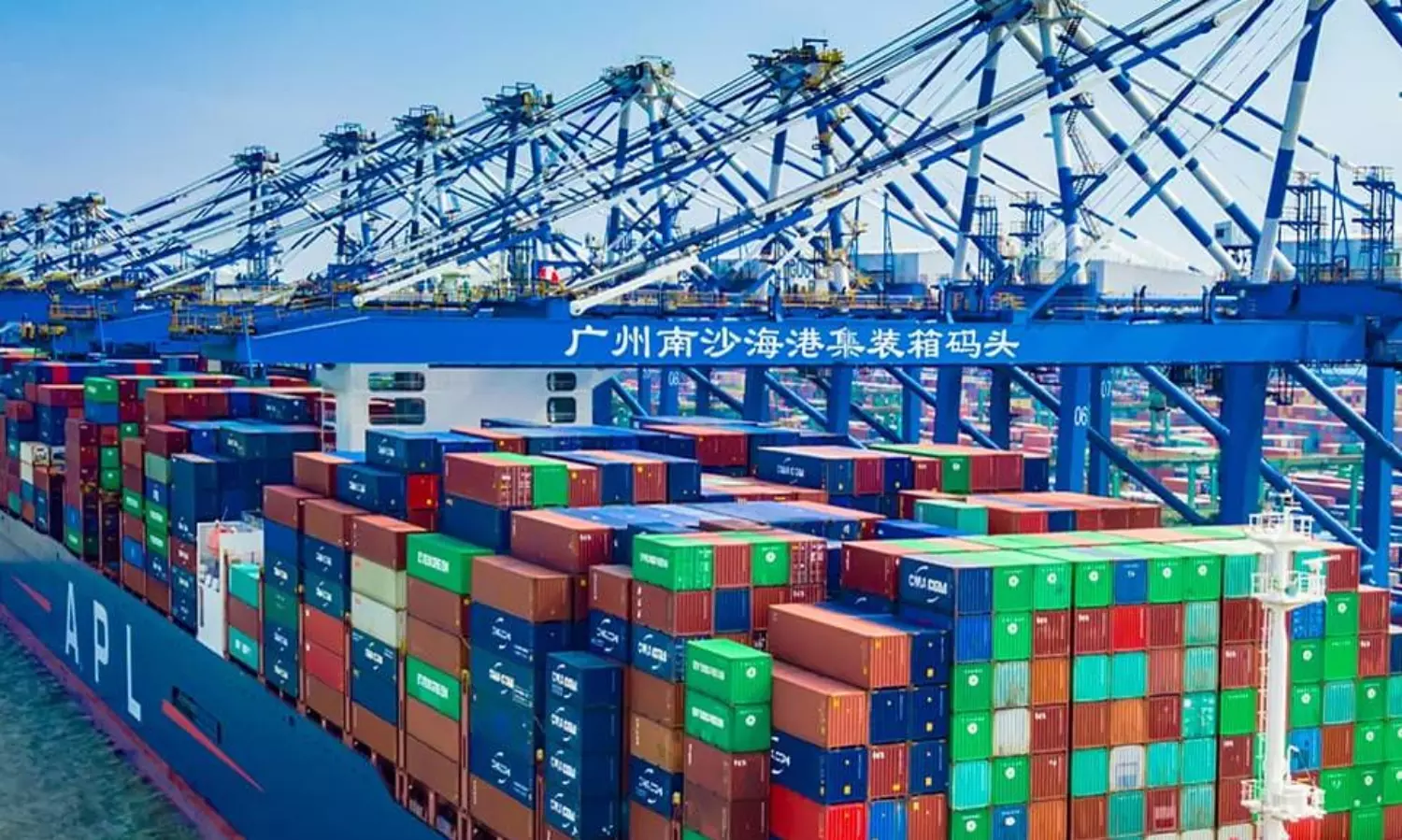China's export dominance to push container repositioning: Drewry
Moving empty shipping containers is currently adding empty miles cost of at least $16 billion/year

(Photo Credit: Guangzhou Port)
A world with a more diverse manufacturing base would contain, or stop, the costly rise of the long-distance empty repositioning of containers on the big East-West routes, which costs billions of dollars annually, according to the latest update from Drewry.
"The process of spreading the manufacturing load from China is well underway but the country’s export dominance will last for many years, and so too will most of the regional container surpluses and shortages."
The splintering of the world political order is changing who buys what from whom, and more diversity in trading partners offers hope to improve woeful container imbalances, the update added.
Since 2010, Asia has been the only net exporting region, and its aim has been to reposition the vast number of empty containers that it needs from everywhere else (see Figure 1).
"What the above chart tells us is that, generally, Asia’s requirement for empty containers has only gotten greater with each passing year this century. The notable exception was in 2009 when the global financial crash depressed container traffic. The pandemic boom year of 2021 pushed the imbalance to new heights with an estimated 40 mteu repositioned from surplus (import) regions to demand (export) areas as importing nations went crazy for Asian exports. The imbalance narrowed in 2022, but it was still the second highest on record."
North America and Africa import roughly 2.5x more loaded containers than they export, the update added. "Empty steel containers are essentially their biggest export trade. This situation is inefficient, costly and certainly not environmentally friendly. Moving empty shipping containers is currently adding an astronomical empty miles cost of at least $16 billion a year." (Table 1)
China-U.S. story
China’s share of U.S. container imports from Asia has dropped dramatically since the two countries’ trade war erupted in 2018, going from 69 percent in 2017 to 59 percent after five months of 2023 . Nonetheless, they remain tied to one another through the sheer volume of bilateral container trade that far outweighs any other partnership. "Breaking up was always going to get messy."
A dilution of trade between China and the U.S. doesn’t necessarily mean that eastbound Transpacific volumes or container imbalances will be reduced, the update added. "Some of the export trade will simply be substituted to another country within Asia. The other option is that instead of going direct to the U.S., cargoes are first sent to either Canada or Mexico before making their way across the borders. Again, this won’t move the dial regarding container imbalances. Therefore, while China might not be directly serving the U.S. as much it did, it kind of is doing so indirectly."
As things stand, the relocation of some of China’s container exports as we have seen is unlikely to significantly improve container imbalances as it doesn’t greatly change regional production/consumption ratios.
"For the situation to dramatically improve, there will need to be a step change in near-sourcing, and generally more levelling up of intercontinental imports and exports across all regions. Until the situation flips, it is almost inevitable that empties handling will continue rising."


